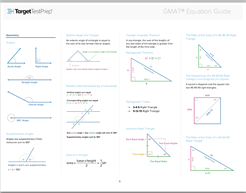Events & Promotions
|
|

GMAT Club Daily Prep
Thank you for using the timer - this advanced tool can estimate your performance and suggest more practice questions. We have subscribed you to Daily Prep Questions via email.
Customized
for You
Track
Your Progress
Practice
Pays
Not interested in getting valuable practice questions and articles delivered to your email? No problem, unsubscribe here.
- Nov 22
11:00 AM IST
-01:00 PM IST
Do RC/MSR passages scare you? e-GMAT is conducting a masterclass to help you learn – Learn effective reading strategies Tackle difficult RC & MSR with confidence Excel in timed test environment - Nov 23
11:00 AM IST
-01:00 PM IST
Attend this free GMAT Algebra Webinar and learn how to master the most challenging Inequalities and Absolute Value problems with ease. - Nov 25
10:00 AM EST
-11:00 AM EST
Prefer video-based learning? The Target Test Prep OnDemand course is a one-of-a-kind video masterclass featuring 400 hours of lecture-style teaching by Scott Woodbury-Stewart, founder of Target Test Prep and one of the most accomplished GMAT instructors.
Kudos
Bookmarks
I'd also add one more element to Coordinate geometry. The coordinates of a point P on line joining two points A(x1,y1) and B(x2,y2) such that PA:PB is in the ration m:n would be ((mx2+nx1)/(m+n),(my2+ny1)/(m+n)).
Kudos
Bookmarks
I know this post is quite old, but I'm just discovering this forum (thankfully after only being 1 week into studying). I genuinely am surprised to see such great resources on here and I'm feeling more confident, even after just discovering gmatclub, that I'll get a good score.
I have a question about the downloadable sheet. I'm kind of confused with how it's ordered and why some of the items are included. Why are some fractions and some exponents on here, but others aren't? Is there a reason for these particular ones to be remembered? When a fraction or percentage is listed, should we be memorizing the decimal, percentage and fraction versions of each of them?
For the last three lines, why is it important to know the multiples of 12, 15 and 8 over other ones?
I have a question about the downloadable sheet. I'm kind of confused with how it's ordered and why some of the items are included. Why are some fractions and some exponents on here, but others aren't? Is there a reason for these particular ones to be remembered? When a fraction or percentage is listed, should we be memorizing the decimal, percentage and fraction versions of each of them?
For the last three lines, why is it important to know the multiples of 12, 15 and 8 over other ones?
Kudos
Bookmarks
tkaelle
The doc gives some arithmetics which one will frequently need while solving the GMAT questions. Though I agree that some useful staff is missing and presence of some other things is debatable.
As for the percentages, it's good to know fractional as well as decimal representation of some of them.











